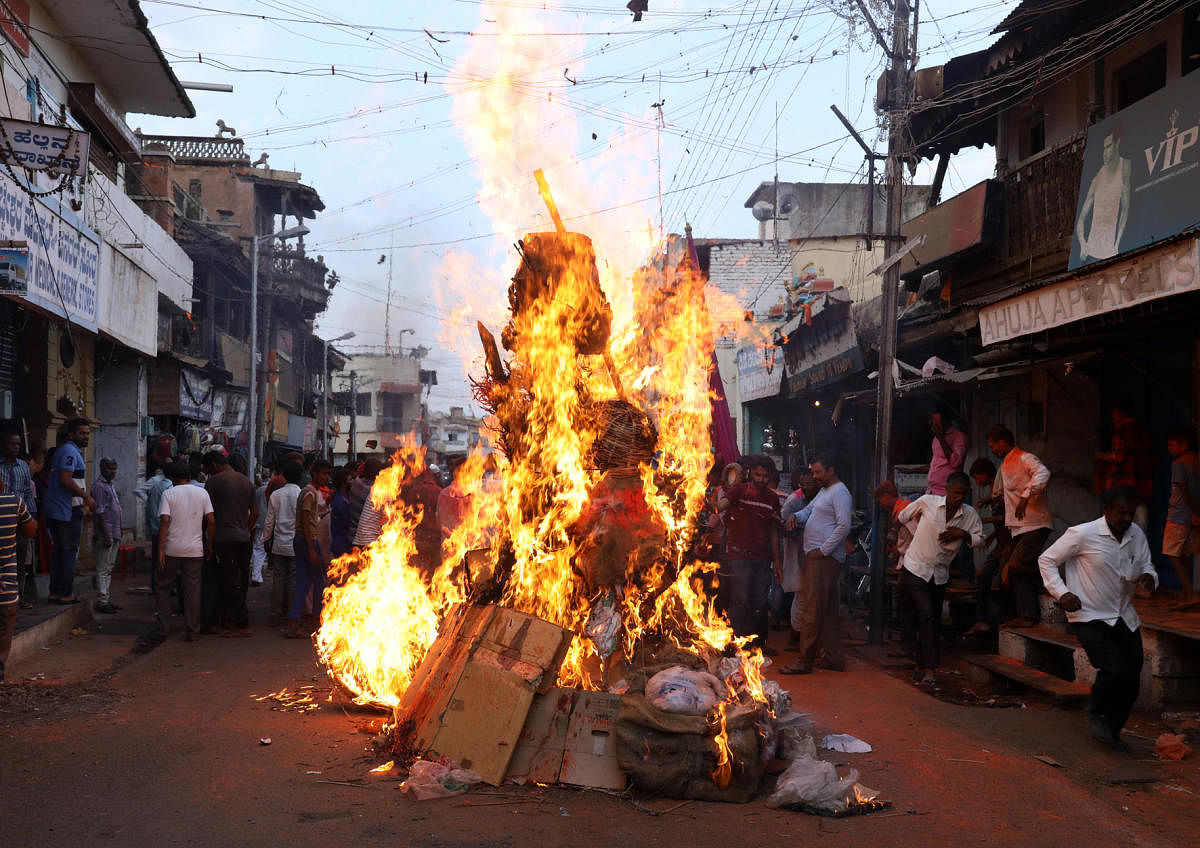Bagalkot's festival of colours and harmony

Bagalkot has a unique way of celebrating Holi. Celebrated for five days, the festival that marks the arrival of spring is not just a show of colours but represents the city's deeply syncretic culture.
People from diverse communities take part in the festivities, which prompted the Karnataka government to accord the festival a cultural tag this year.
Though the roots of the Holi celebrations at Bagalkot are not clear, the Peshwas are said to have promoted the idea of ‘Holi with harmony’, giving the festival a new form that has been followed till date.
Earlier Bagalkot had five important streets that were the epicentre of celebrations: the Killa (fort area), Hale Pete, Hosa Pete, Jain Pete and Venkat Pete. These streets have since lost their form due to the Almatti hydroelectric project.
All these streets are adorned with the historic Turai Halage, a frame drum-like instrument, and nishanis or flags. Each of these streets had one family of Babudar (post given by the royals) who were entrusted with the responsibility of carrying forward the festivities, a tradition the families follow till date.
Halagi fest
Bagalkot's Holi festivities are kicked off with the Halagi festival, where a huge Turai Halagi — in gold and silver colour, adorned with a feather — is beaten. There are also 25 feet tall Nishanis (flags) made of colourful silk that is said to have been given by the Peshwas or the Adil Shahi Sultans.
Apart from the shehnai and turai halagi, other folk instruments like the the Chaluvadi Ghante, dagga (tabla) and other instruments add to the tune.
Bagalkot also has a Halagi mela team that has participated in various cultural fests across the country and received prizes and appreciation.
Another speciality of this programme is Holi padagalu. These songs generally take the form of a question and answer session among groups in the crowd.
Kamadahana
After Halagi comes the Kamadahana.
On Hunnime day, people get puja materials from the houses of the Babudars, who initiate the festivities. The Babudar families then together carry the historic nishanis in a procession and visit the house of Khatedaar family (another Babudar from the backward community) early in the morning and invite the family for the festivities.
When the ‘Hubba star’ (what is this?) occurs, sparks from the Khatedaar family are brought to light the bonfire (Kaamadahana) set in all the other streets.
“All these traditions get the various communities together,” says Narayanrao Kulkarni, the an eight generation descendant of the Kulkarni Babudar family.
Once the Kamadahana is done, people play with the ash and after that, they begin the play with colours or Bannada Okuli (as it is called locally). For the next three days, (until Ranga Panchami), the play with colours goes on in different streets.
Coloured carts
Another unique feature of Holi here is the barrels filled with coloured water, carried on the backs of some 15 to 20 bullock carts. (Now, even tractors are used along with the carts).
For three consecutive days people go around take out this procession, splashing people with coloured water.
“There is no distinction on the basis of caste and community while playing with colours. Everyone voluntarily takes part in it. Every year, there is a competition on who will have the maximum number of carts and barrels,” says Kalakappa Badawadagi of the Holi Utsav Committee.
This committee was formed over a decade back, when Bagalkot city was affected by the Almatti dam project and many people began migrating out of the city. In an attempt to keep the glory of the Holi festivities alive, local community leaders like Jyothiprakash Salunke, Monappanna Tapshetty, Mallappa Arabbo, Mahabalesh Gudgunti, N R Kulkarni and others came together and formed the committee.
Sogina Bandi
After the play of colours, a procession of tableaux (called Sogina Bandi) is taken out in the evening. People dressed as mythological and historic characters adorn the tableaux that pass through designated routes in the city, starting at the night and going on until the morning.
The preparation for the tableaux begins three months before the festival. While the procession featured mainly mythological stories, it has evolved to include stories of the valour of Shivaji, Channamma and others.
"In recent years, these tableaux were also used to give messages for social causes like the control of AIDS and liquor addiction. Now, tableaux with fancy LED lights also have themes like IPL matches, politics, popular films etc,” says Sachin Desai, a resident of Bagalkot.
The best tableaux are also awarded with attractive prizes.
“Over the years, our traditional streets lost their original form and the city got divided into three. But we do not want our culture to submerge like our city. So this year, we are trying to bring back the glory of the festival which saw dull moments during Covid,” says Kulkarni.
Deccan Herald is on WhatsApp Channels| Join now for Breaking News & Editor's Picks